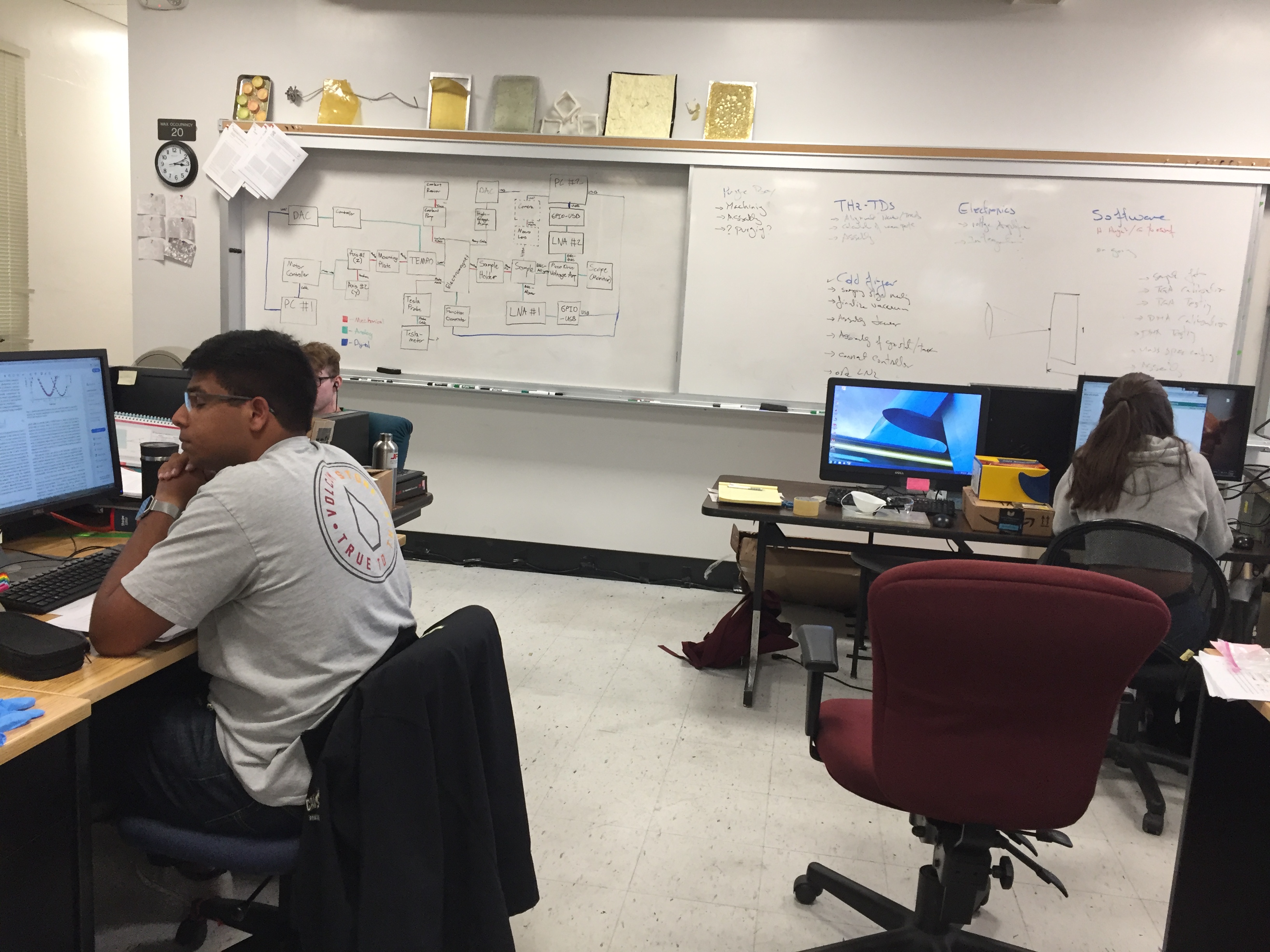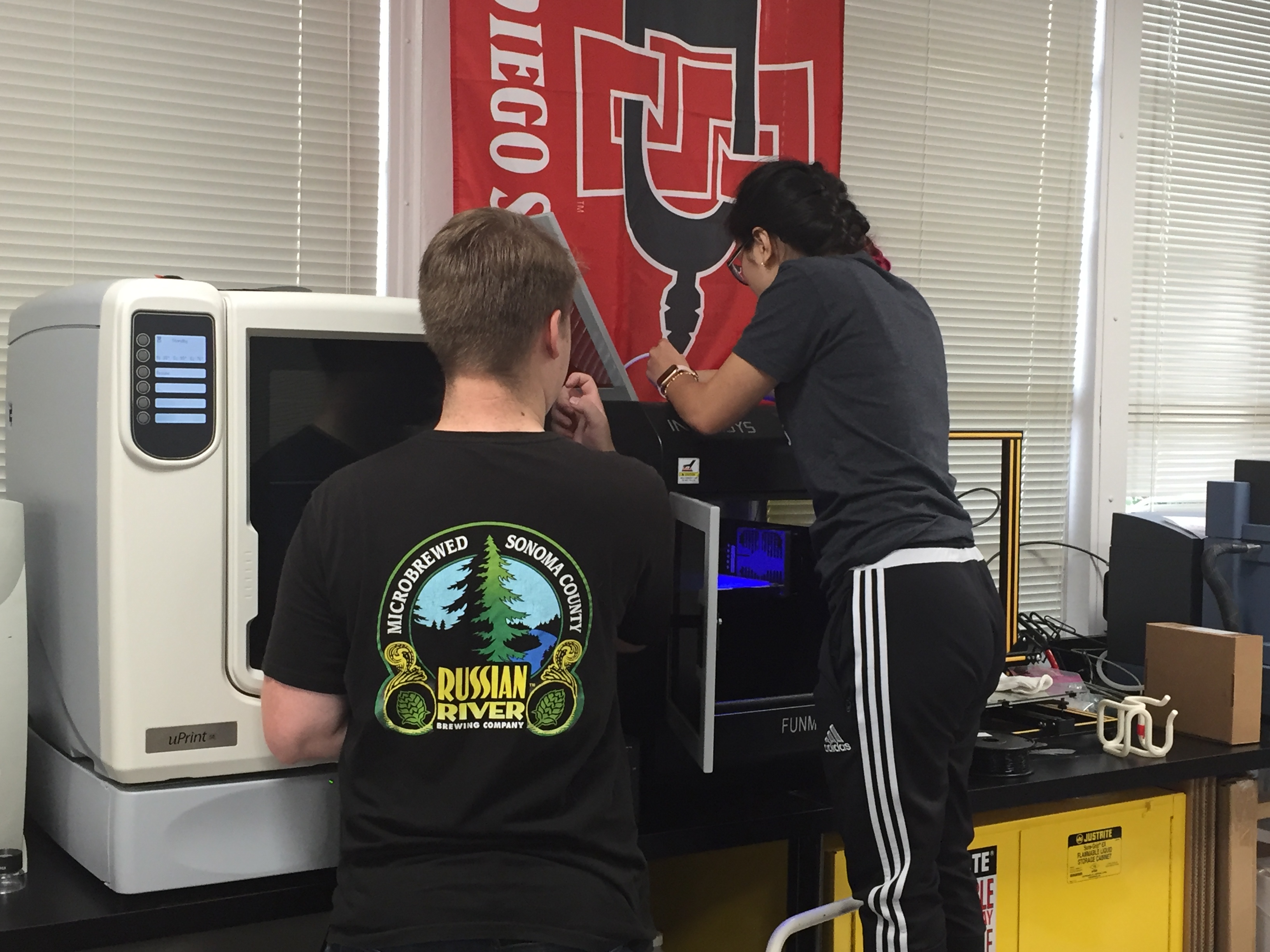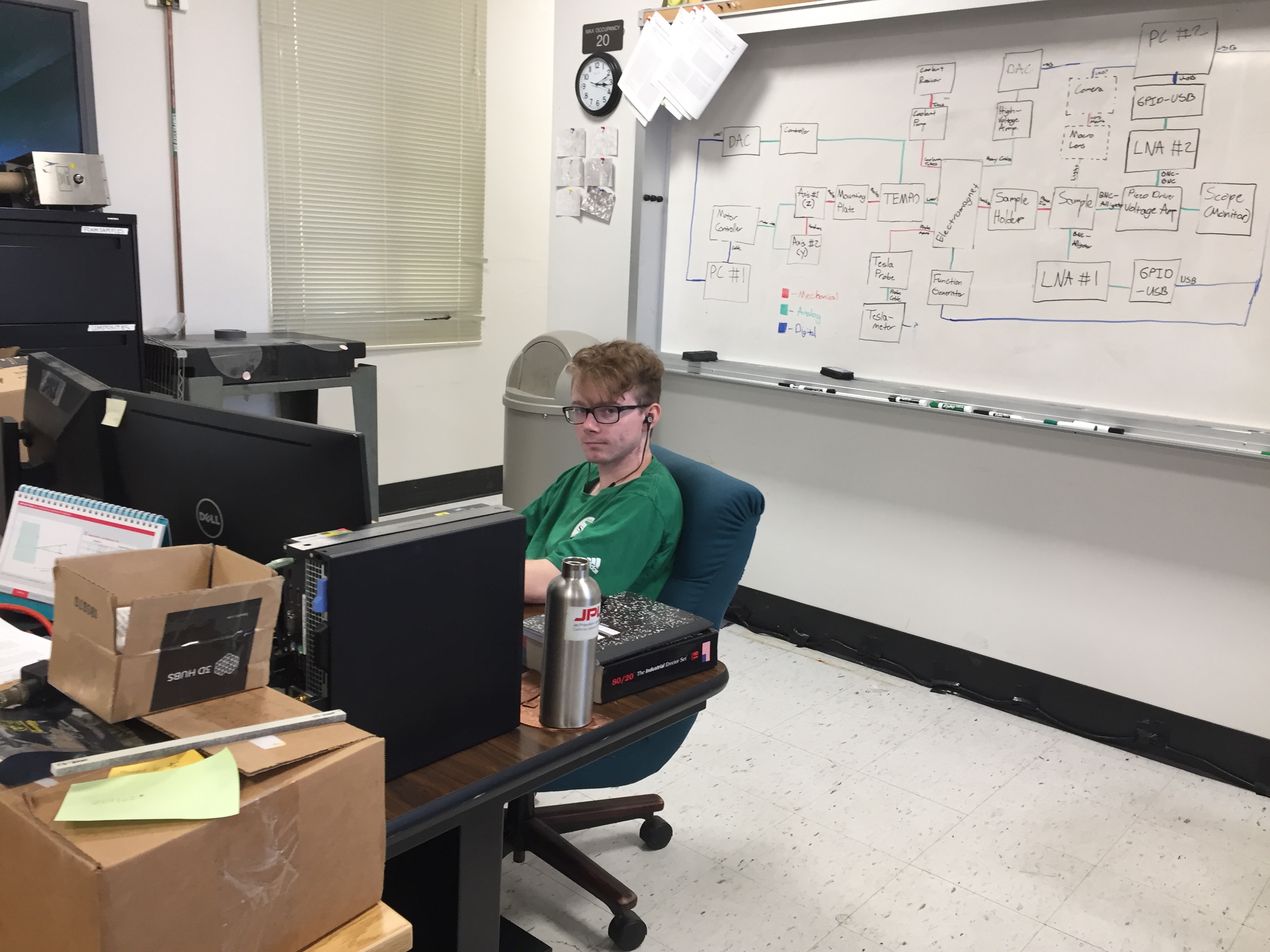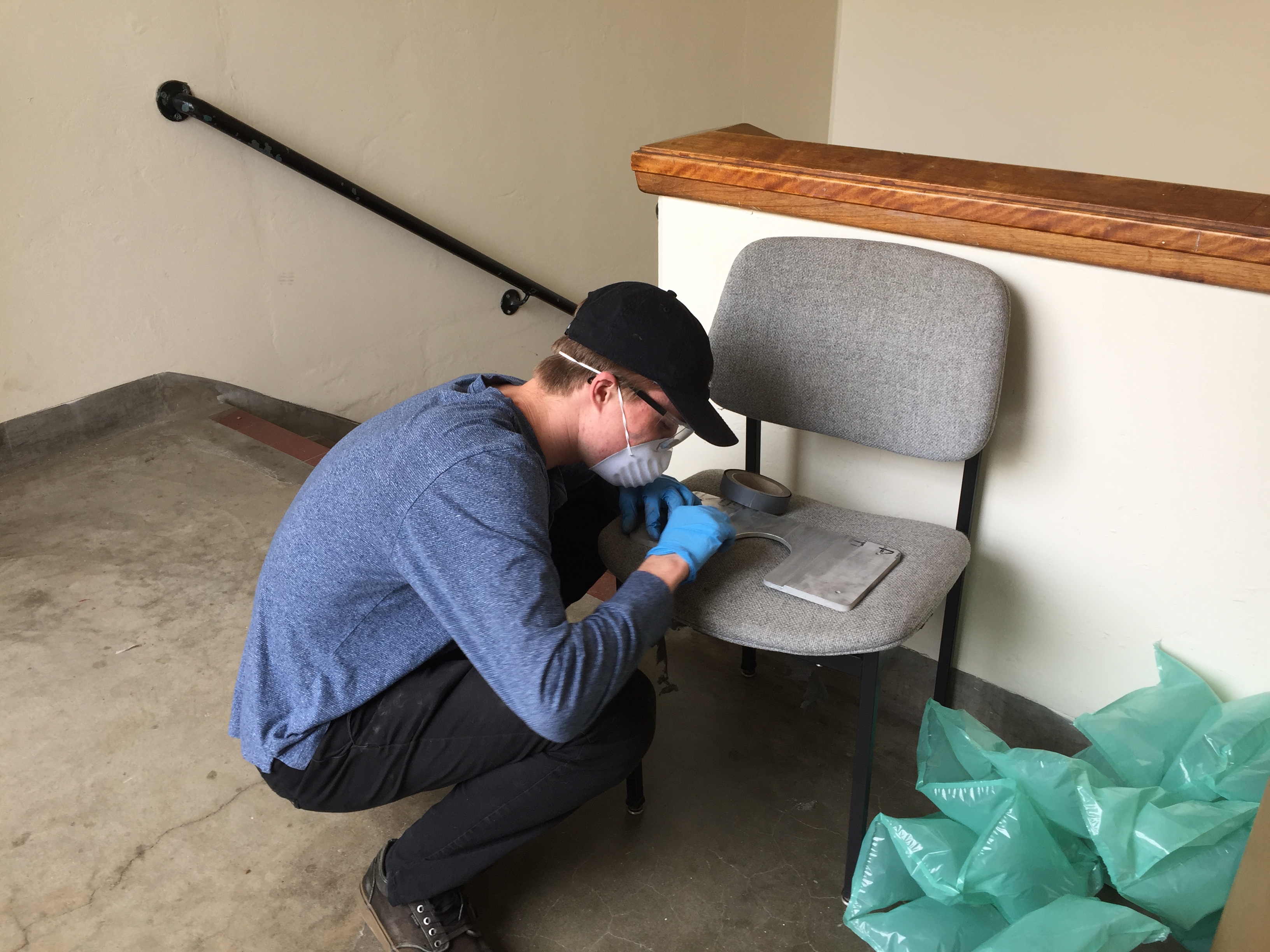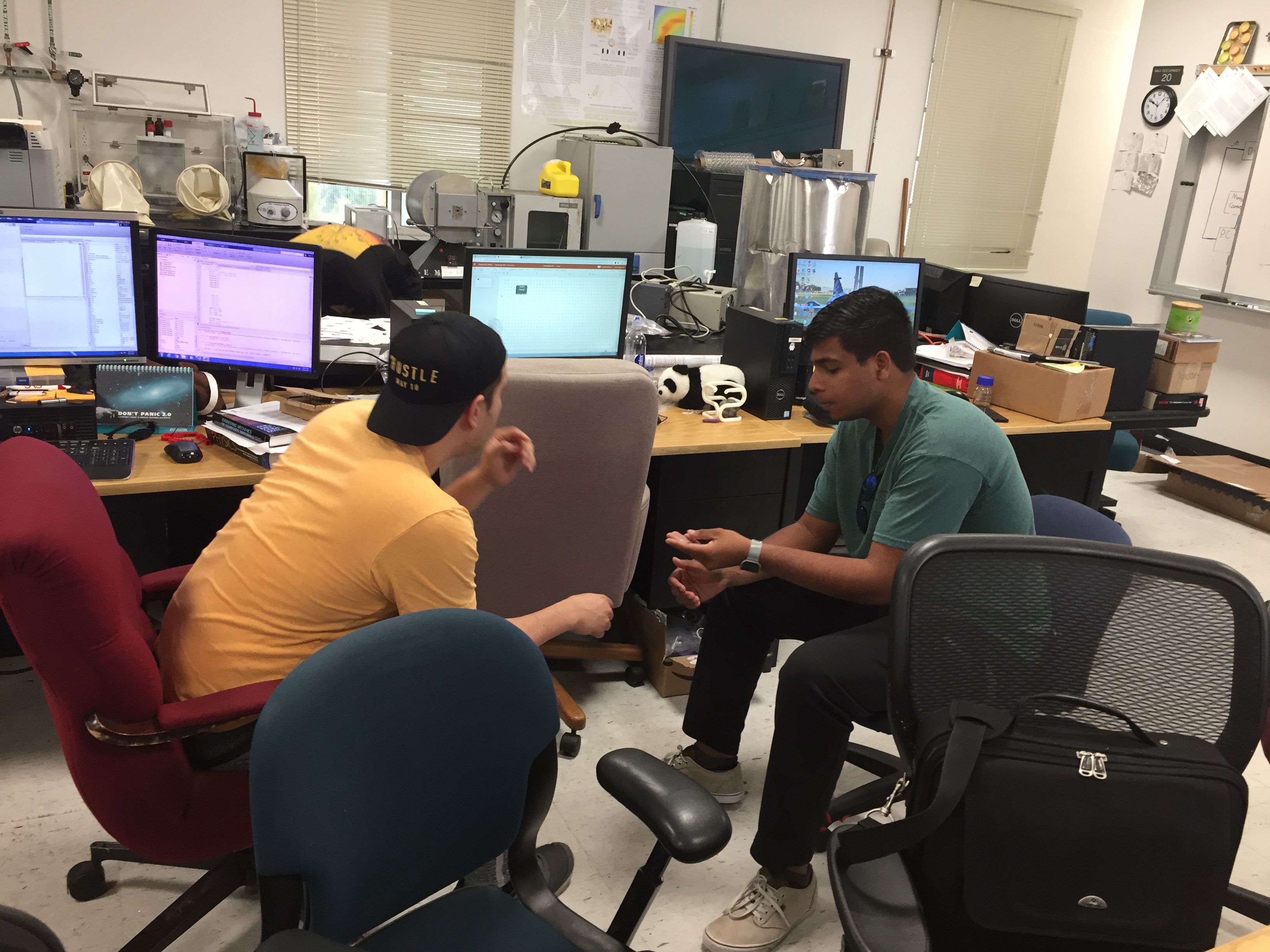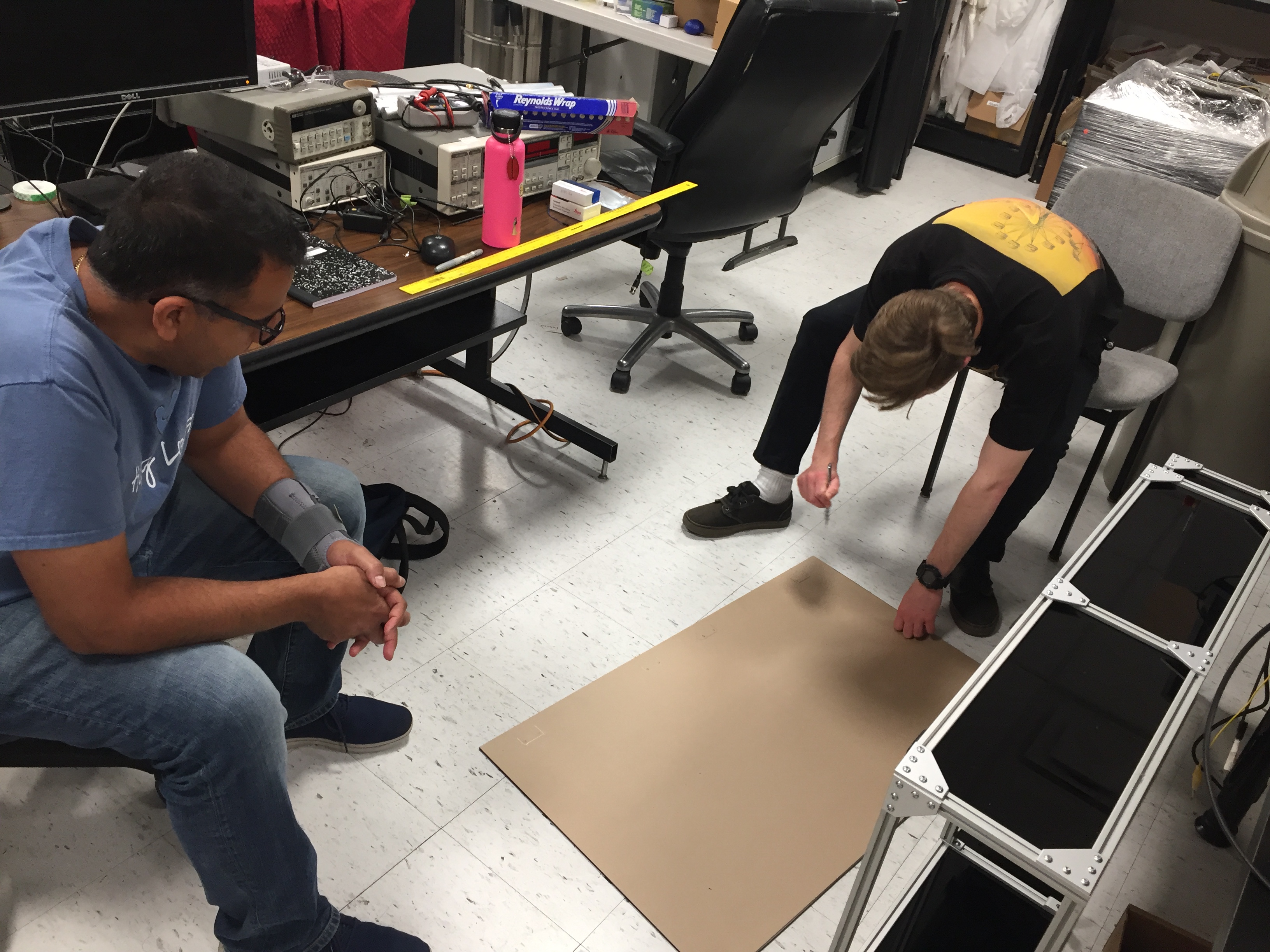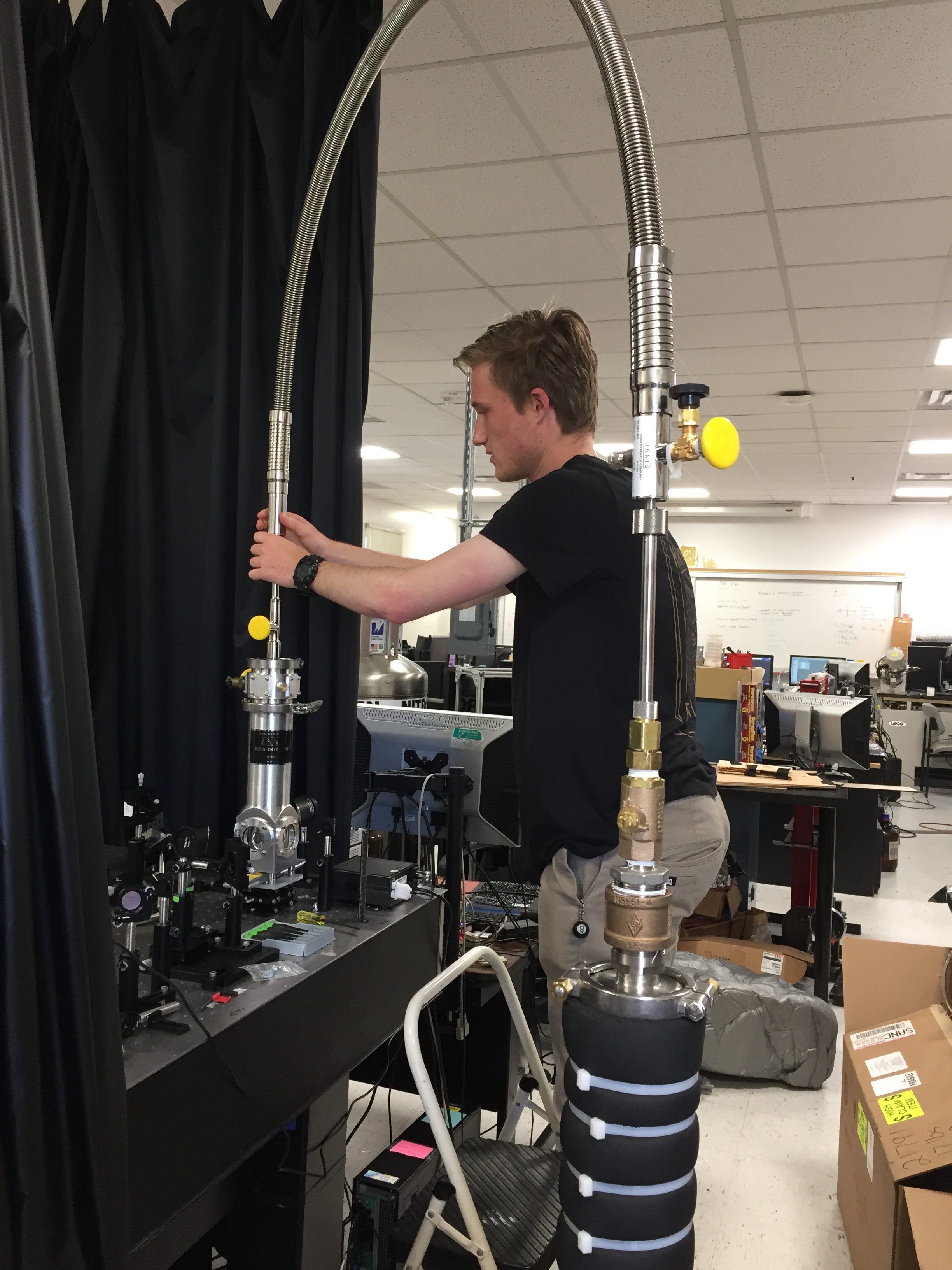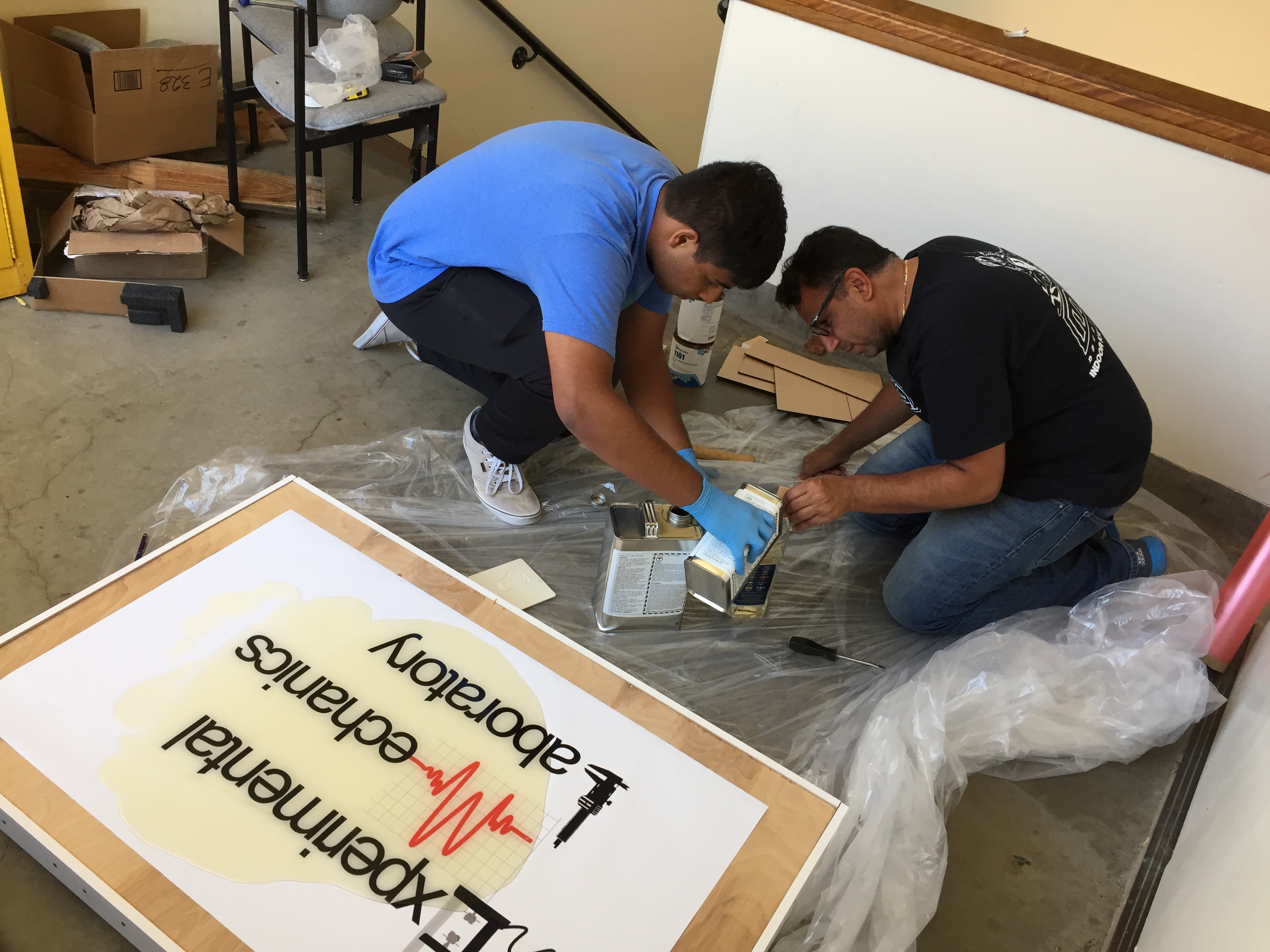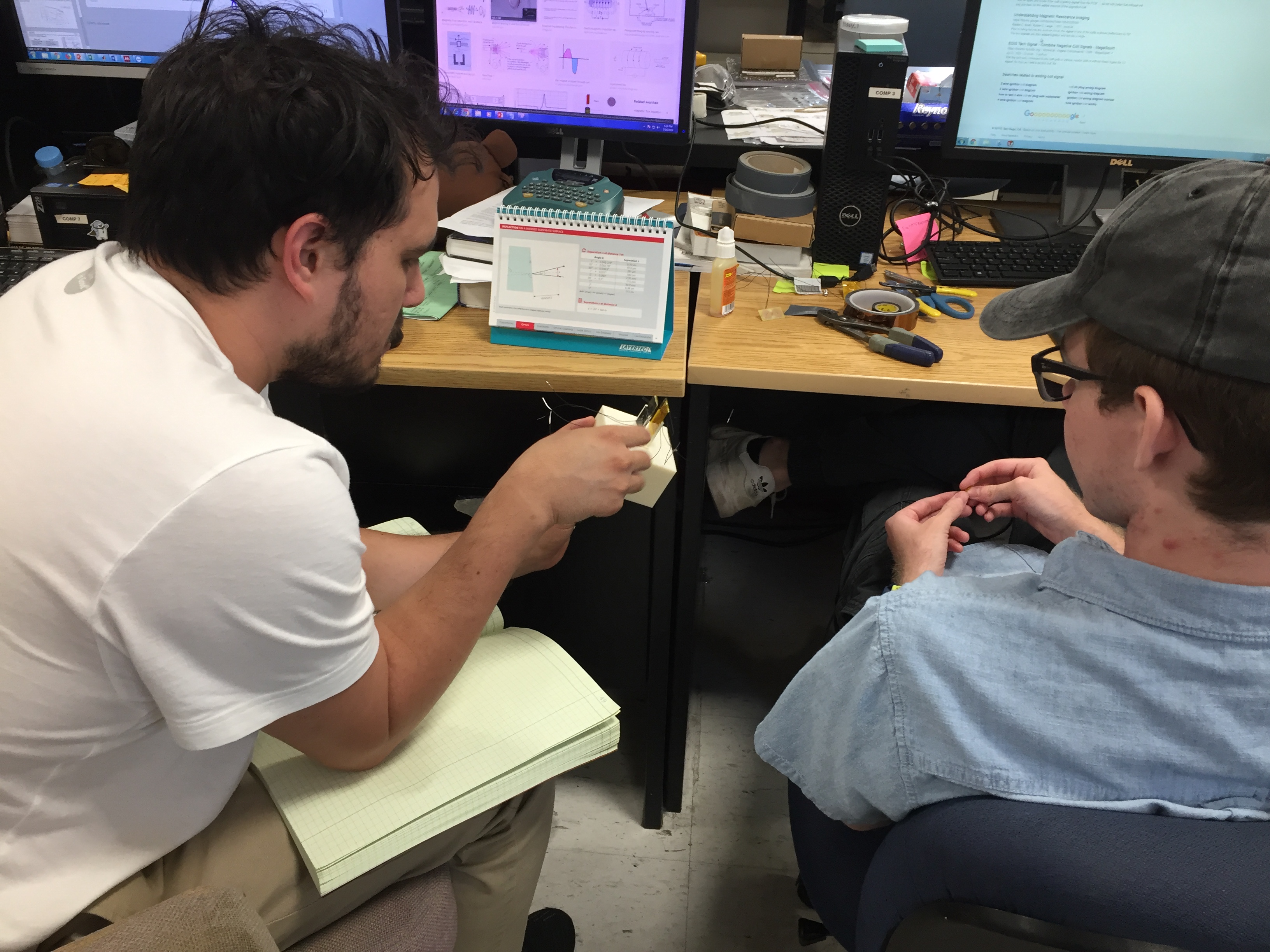Junior Researcher Experience
The Junior Researcher Experience (JRE) at SDSU’s Experimental Mechanics Laboratory (EML) is a summer program geared to attract and engage undergraduate and community college students in an eight-week deep dive into basic and applied research in the broad area of Mechanics of Nontraditional Materials. While EML is a state-of-the-art engineering mechanics lab, we welcome all science, technology, engineering, and mathematics majors. We believe with such a knowledge diversity; we can continue to progress towards the frontiers of science while providing a meaningful experience to the future generation of engineers. Each JRE scholar is assigned a research project that is directly mapped with one of our research thrusts. The scholar works under the guidance and mentorship of the PI and a graduate student. Each scholar is expected to dedicate at least 20-25 hours per week so we can provide you with a challenging yet meaningful experience. Before their arrival for the program, JRE scholars are assigned a dedicated graduate mentor (serves as the primary Point of Contact) and a brief project description as well as some introductory reading materials. While the JRE program is voluntary, we provide the JRE scholars with all the materials and supplies needed for the project. We also allocate a special place in the lab, where JRE scholars can perform the assigned research project. JRE scholars are only responsible for transportation to and from campus as well as all their meals while on campus. JRE scholars are expected to complete all the project milestones and participate in academic and social activities to attain the full impact of the program.
Class of Summer 2024 JRE Scholars
Project Description: Mathematically generated structures exhibit superior strength-to-weight, stiffness-to-weight, and deformation-to-weight ratios, transcending the state-of-the-art in stochastic and ordered foams. Recently, EML explored the performance of specific TPMS structures (a subclass of lattice structures) under different operating and loading conditions, specifically a broad range of strain rates. However, the response to low and moderate velocity impacts is currently under investigation due to experimental shortcomings at EML. Hence, this project aims to elucidate the efficacy of specific TPMS structures as a function of reinforcing weight ratio, ranging from neat to 20 wt.%, of glass microballoons. These specific TPMS structures were selected by an exploratory study assessing their mechanical behavior. The addition of reinforcing microballoons is motivated by strategically tailoring the properties. The approach is to 3D printing sets of neat and reinforced TPMS structures as a function of the glass microballoons weight ratio. The experimental setup must also be upgraded by (1) integrating new, high-speed sensors to acquire high-fidelity temporal data and (2) retrofitting the high-speed camera and lighting to fit seamlessly around the drop tower, which can be translated rapidly to the shock tube. The force-time histories will be exploited to report the stress-strain curves based on the deformation kinematics.
Class of Summer 2023 JRE Scholars

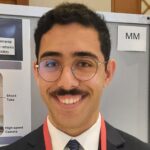
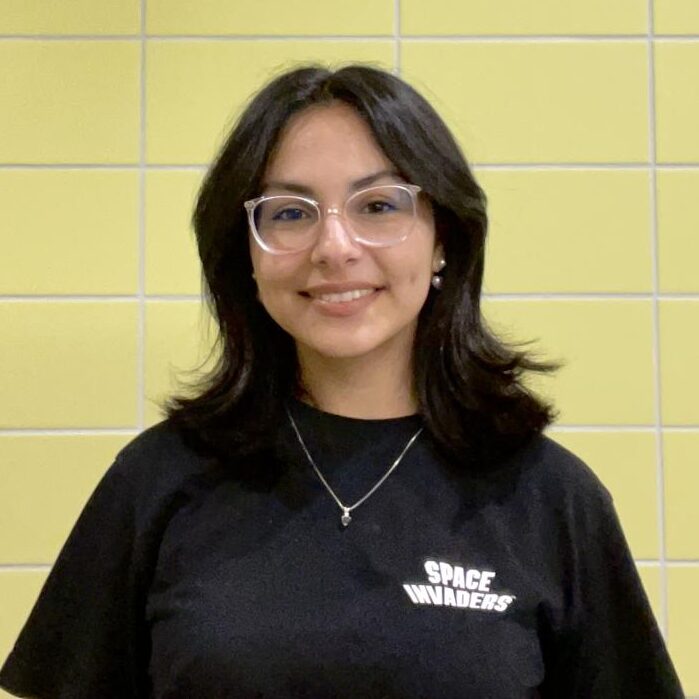
Project Description: The microstructure of cellular materials (i.e., foam) is responsible for their mechanical and thermal performance under different operating, loading, and environmental conditions. Recently, EML synthesized and characterized polyurea elastomeric foams with different densities, hence different mechanical properties. The foam was classified as a hierarchical, semi-closed cell structure with reinforcing polyurea microspheres. EML also successfully fabricated and characterized the multiscale mechanical response of density-graded polyurea foams consisting of multiple layers with different densities. This project aims to study the effect of shock loading on the mechanical performance of density-graded polyurea foam structures. The approach uses an existing, small-scale shock tube to submit polyurea foam samples to intense and rapid mechanical loading while concurrently measuring the induced forces as a function of loading time. Specifically, you will integrate a newly acquired loadcell into the existing setup and collect preliminary force-time histories that you will vigorously analyze using various signal processing tools and employing mechanics of materials approaches. You will then couple the force-time histories with those previously acquired strain-time histories to generate dynamic stress-strain curves and evaluate the strain rate sensitivity of conventional and density-graded polyurea foams.
Class of Summer 2022 JRE Scholars


Paul Kauvaka Jacob Gould
Project Description: Engineers continue to be fascinated with light-matter interactions to gain deeper insights into the fundamental mechanisms responsible for the intrinsic response of materials. This project explores an advanced optical approach to measure the dynamic mechanical response of polymeric foams under dynamic loading. The approach integrates heterodyne Doppler velocimetry (based on the frequency shift of light) and a shock tube (similar to a projectile launcher). On the one hand, velocimetry directly measures the free surface velocity of the tested samples, avoiding challenges associated with current state-of-the-art interferometric measurement approaches. On the other hand, a specific interest to the sports gears community is polymeric foams with high recoverable compressibility. Specifically, polyurea foam with energy-tunable mechanical properties will be used as a model material, which will be submitted to high-velocity impacts in the shock tube and concurrently characterized using the proposed system. Our polyurea foam is an exciting testbed based on its tunable microstructure and properties for orthotics, helmets, body, and protective paddings. While the proposed research promises to transform the state-of-the-art experimental solid mechanics, SURP students (two students) will be provided with experiential training on state-of-the-art experimental and computational tools while instilling interpersonal skillset in them. Students are supported by San Diego State University’s Summer Undergraduate Research Program.
Class of Summer 2021 JRE Scholars

Brooke Tyler, SDSU Undergraduate Student (btyler3937@sdsu.edu)
Mathematics
Project Description: Machine learning is emerging as an imperative tool for the advancement of science and engineering by assisting in synthesizing data into stochastic models with unprecedented prediction capabilities. At the same time, materials science and engineering (defined broadly encompassing all aspects of the process-structure-property-
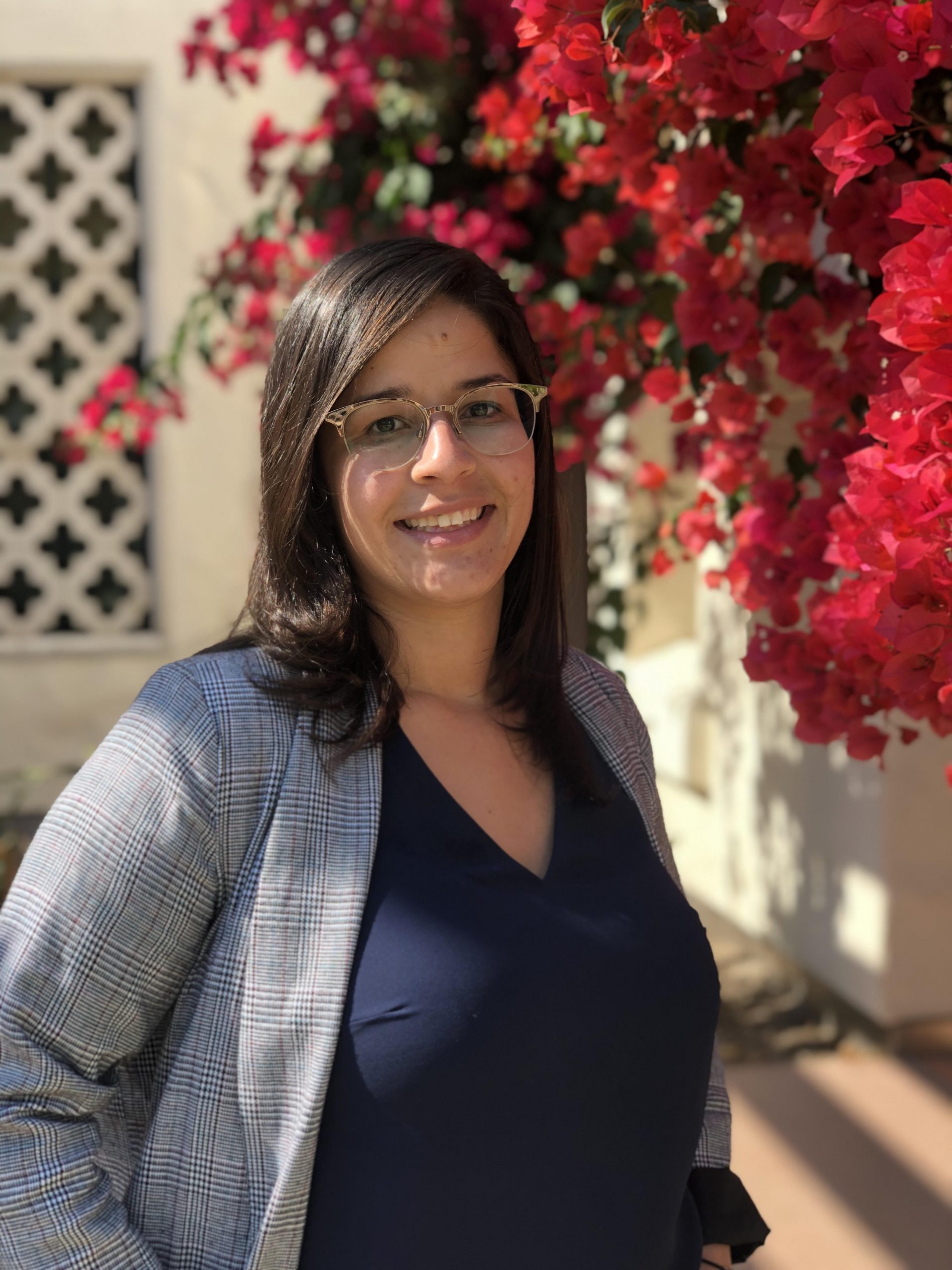 Crystal Reina, SDSU Undergraduate Student (creina0133@sdsu.edu)
Crystal Reina, SDSU Undergraduate Student (creina0133@sdsu.edu)
Mathematics
Project Description: Machine learning is emerging as an imperative tool for the advancement of science and engineering by assisting in synthesizing data into stochastic models with unprecedented prediction capabilities. At the same time, materials science and engineering (defined broadly encompassing all aspects of the process-structure-property-
Class of Spring 2021 JRE Scholars
Cheyenne Greer-Potts, SDSU Undergraduate Student (cgreerpotts3515@sdsu.edu)
Mechanical Engineering
Project Description: The microstructure of cellular materials (i.e., foam) is responsible for the mechanical and thermal performance of the foams under different operating, loading, and environmental conditions. Recently, Youssef et al. synthesized and characterized polyurea foams with different densities, hence different mechanical properties. They reported that the foam consists of spherical unit cells, where each cell exhibits several characteristic geometries. Scanning electron micrographs were used to illustrate the main geometrical features of each unit cell, namely nearly uniform wall thickness of the spherical capsule, dense microspheres reinforcement, and perforation due to the expansion of the foaming agent. This project aims to elucidate the contribution of each of these geometrical features on the local mechanical response of the foam. The approach is to use finite element simulations to create three configurations and study their response to different boundary conditions using Ansys® Workbench.
Class of Summer 2019 JRE Scholars

Briana Nieves, SDSU Undergraduate Student (nievesbriana07@gmail.com)
Incoming Mechanical Engineering
Project Description: Understanding the hygrothermal stability of polymers is imperative for the integration of this class of materials in real-life applications, where harsh environmental, operating, and loading conditions are imminent. The decompositional behavior of polymers is usually explicated using Thermogravimetric Analyzer (TGA), where the mass of the sample is measured as a function of temperature that ranges from ambient temperature to ~1000°C. The exhaust gases from the TGA can be transferred to analytical chemistry instruments for post-decomposition analysis to measure the concentration of chemical elements, where Mass Spectrometry is one of these powerful tools. The objectives of this proposal are twofold; first, the mass spectrometer that currently exists at the Experimental Mechanics Laboratory will be installed and calibrated. Second, once it is operational, the spectrometer will be integrated with the TGA at EML to perform post-decomposition analysis of different passive and active polymers.

Eugene Egorov, Colorado Boulder Undergraduate Student (Eugene.Egorov@colorado.edu)
Physics
Project Description: Polymers used in impact mitigating armors are hypothesized to undergo a shift in the glass transition temperature (Tg) and a change in the free volume during ultrahigh strain mechanical loading. Due to the unavailability of experimental mechanics setups capable of dynamically loading the materials while simultaneously characterizing the molecular conformational changes in the polymer structure, a gap in the understanding of the primary impact mitigation mechanisms persists; hence hindering the optimization of the effectiveness of polymer-based armors. The goal of the project is to gain a fundamental insight into the mechanics of impact mitigating polymers under different loading, operating, and loading conditions. The morphology of the semi-crystalline polymer structure consists of densely-packed crystalline domains that bound randomly entangled macromolecule coils in the amorphous regions. This complex structure gives rise to intra- and intermolecular vibrations that are found in the THz frequency band, which include oscillations of the backbone, oscillations of hydrogen-bonds, and hindered chain motion. Resonant interactions of lattice vibration with electromagnetic waves yield two orthogonal translational lattice modes that are THz active. The intra- and intermolecular motion appears as steps (sudden drop or increase in the index of refraction at certain THz frequencies) or broadening (lack of distinctive peak in the extinction coefficient, i.e., the imaginary part of the complex index of refraction) in the THz spectra. The combined motion of the macromolecules will result in a change in the free volume of the tested polymer. Thus, the experimental setup required to accomplish the goal of this project consists of THz-TDS interfaced with a cold finger set up to control the sample temperature over a range from below Tg to the maximum expected operating temperature of the tested polymer. This integrated setup will be used to report the response of various polymers at different thermal and loading conditions.

Anil Kumar Singh, Cal Poly SLO Undergraduate Student (asingh87@calpoly.edu)
Mechanical Engineering
Project Description: Multiferroics are a subclass of smart materials with coupling between two or more ferroic order parameters such as ferromagnetism and ferroelectricity. Multiferroics have been gaining scientific and industrial interest recently based on the potential of low power consumption, high energy efficiency, and miniaturization of devices to the nanoscale. The latter is specifically important due to the nexus of the electric current, magnetic field, and electrical resistivity impeding the current electromagnetism paradigm at the nanoscale. Recently, Newacheck et al. published novel result about the synthesis and characterization of magnetostrictive Terfenol-D particles suspended in electroactive PFDF-TrFE polymer matrix. They reported the piezoelectric, dielectric, and polarization progress of this novel composite, but the magnetoelectric and mechanical properties were not discussed therein. Thus, the objective of this project is to re-synthesize the composite based on the procedure delineated by Newacheck and coworkers, followed by mechanical and magnetic characterization after verification of the previously reported results.

Sophia Nguyen, SDSU Undergraduate Student (ngsophia1211@gmail.com)
Bioengineering
Project Description: Recently, the Experimental Mechanics Laboratory (EML) at San Diego State University successfully demonstrated a multifunctional space structure (mCubeSat) that was 3D printed using ABS plastics. The multi-functionality of the mCubeSat structure included load-bearing up to ~500N, fluid transport with sealing pressure up to ~200kPa, and electrical conductivity via silver thin-film deposition. The aforementioned technology demonstration represents multiple engineering breakthroughs due to the existing limitations in printing and coating methods. Generally, polymer-based 3D printing processes result in porous structures, which are unable to contain any fluid, hence reduce the overall functionality of the structures. Sealing of exterior surfaces was reported before. Nonetheless, the sealing of narrow internal channels remained elusive until the recent findings by EML. Additionally, metallization of narrow internal channels is a continuous area of research and investigation, but EML successfully demonstrated that the electroless silver deposition process could add environmentally-stable electrical conductivity to any 3D printed structure with embedded channels. The objective of this project is to investigate the scientific feasibility of further increasing the functionality of the CubeSat structure by using a mass-shifting mechanism for headings control and increase the range of operating conditions by using vacuum-stable, high-temperature materials (e.g., Ultem). To accomplish this objective, the previously investigated structure will be 3D printed using a new Ultem-capable printer, which will allow the structure to operate in a vacuum and at high temperatures. After that, the sealing and coating processes will be modified to be compatible with the new printing material. The internally sealed and coated-structure will be then suspended on a gimbal to track its rotation in response to flowing a fluid through its internal structure in a controlled fashion.

Josh Brennan, SDSU Undergraduate Student (bre9an.josh@gmail.com)
Mechanical Engineering
Project Description: The objective of this project is to design, manufacture, integrate, and test a Vibrating Sample Magnetometer (VSM) into the existing multiferroics characterization experimental setup at the Experimental Mechanics Laboratory (EML). Multiferroics are a subclass of smart materials with coupling between two or more ferroic order parameters such as ferromagnetism and ferroelectricity. Multiferroics have been gaining scientific and industrial interest recently based on the potential of low power consumption, high energy efficiency, and miniaturization of devices to the nanoscale. In order for translation from the lab to the market to take place, in-depth characterization of the mechanical, electrical, and magnetic properties is required, hence the need for a VSM at EML. The vibrating sample magnetometer is a characterization apparatus used to measure the magnetic properties of materials. In this setup, the sample is sinusoidally vibrated (using a loudspeaker or a piezoelectric stack actuator) while the magnetic flux is measured via search coils by recording the induced voltage. The student will design a VSM based on available literature (will be provided), manufacture the required components after review and approval of the design, and integrate the instrument into the existing suite of equipment at EML. The student will perform calibration using a standard sample, which he/she will prepare.
This program is made possible by support from the following agencies.





